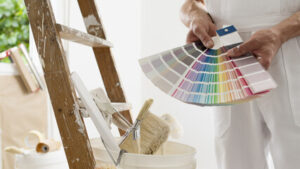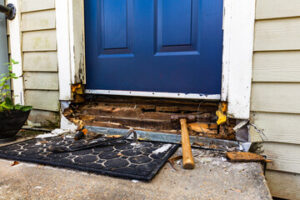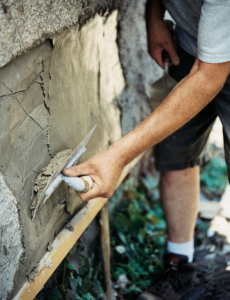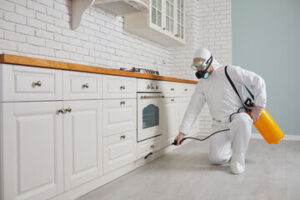Sierra K9 is the abbreviation of “canine,” referring to canines used by law enforcement and military. They’re often trained to detect illegal substances, search buildings and open areas, and help apprehend suspects who flee from or evade capture.

They can also be a de-escalator and provide support to human officers during volatile situations.
K9s have heightened senses that make them useful in environments where human guards or patrols alone aren’t enough. With a keen sense of smell, they can sniff out hidden weapons or explosives at airports, government buildings, and large public events. They’re also adept at searching vehicles or individuals to detect contraband, weapons and other threats that may not be visible or audible to humans. Their presence at facilities signals a robust security environment and acts as a deterrent for criminals who would target soft or vulnerable sites.
During longer security patrols or detection duties, K9 teams take frequent breaks to allow the dogs to rest, recharge and refresh their senses. They’re also often paired with handlers, who can provide comfort and support during stressful situations. This combination allows them to perform more efficiently than a single guard and increases their ability to communicate with each other, which is vital in a dynamic threat environment.
Because they’re so innately intuitive, K9s can identify threats and dangers much more quickly than human guards. In high-risk scenarios, this speed of response can make all the difference. Moreover, they’re highly effective in pursuing and apprehending suspects. Their natural instincts and heightened senses also make them valuable in tracking and locating missing persons.
If you choose a security service that includes a K9 unit, confirm that the dogs and handlers are properly trained. They should have a solid track record and extensive experience working together effectively. Additionally, ensure that the provider has comprehensive liability coverage in case of any incidents involving their K9s. It’s also a good idea to discuss any questions or concerns you might have about integrating the canine guards into your overall security plan with your service provider.
Search and Rescue
In the case of an earthquake, tornado, airplane crash or other disaster that causes widespread destruction, search and rescue dogs are a valuable tool in finding survivors among the rubble. These highly trained teams are called in to work with local police, fire and emergency management personnel.
The handlers must train their dogs to be reliable in stressful, sometimes chaotic situations. These teams go through a rigorous certification process in order to be considered “mission ready” by their respective SAR organization. The dogs must pass several Mission Readiness Evaluations and be re-certified every three years. In addition to the rigorous training for their dogs, SAR handlers must also complete a significant amount of training in land navigation, wilderness survival, radio communication and search strategy/ tactics and FEMA ICS command structure.
K9s used in disaster searches are non-discriminatory air scenting canines that look off-lead for generic human scent in the wind. Each person sheds a large number of tiny flakes of skin that carry their unique scent. These canines are able to find that unique scent in the air and follow it to locate people. Dogs that are specialized in urban disaster search can find people trapped in building debris using the same methodology.
Many people adopt pet dogs with the hope that they will be able to do search and rescue work. While this is a noble and worthy endeavor, it is important that the dog and handler are both physically and emotionally suited to the demanding task. The dog must be a natural at tracking, have the strength and stamina to search for hours in harsh terrains both day and night, and be very loyal to their handler.
Arson
K-9s can do things that humans cannot, such as sniff out minute traces of accelerant chemicals. They can also detect human remains that may be buried under the debris from a fire. Some canine teams are trained to handle hazardous materials, while others have the specialized training needed for cadaver work.
Arson investigation is a complex and time-consuming process, and the proper use of tools can help investigators streamline it. Crime scene documentation tools like sketches and photo equipment, which ensure accurate and thorough documentation of the crime scene, can make a significant difference.
Carbon monoxide detectors are another valuable tool that can alert investigators to dangerous levels of the gas that is produced during a fire. And while it might seem obvious, the importance of proper personal protective equipment can’t be overstated; it keeps the investigators themselves safe and mitigates the risk of contamination while gathering and preserving evidence.
A highly-trained accelerant detection dog named Judge is a critical part of Laubach’s arsenal; the canine is trained to identify the chemical components that are used in most commercially available fire accelerants, such as gasoline and lighter fluid. Judge can accurately detect 61 different types of accelerants, making him an invaluable resource to the department’s investigation.
The New Jersey Division of Fire Safety’s fire investigation/K-9 unit has partnered with many local jurisdictions and is a primary member of multiple county fire investigation taskforces. It has also worked on high-profile cases involving gang/drug activity, domestic terrorism, and marine fires. The K-9 team’s efforts are primarily funded by State Farm, which provides the cost of the dog and handler as well as the ongoing costs for food, supplies, travel and lodging, and training.
Drug Detection
Often deployed at public events, K9 teams are trained to sniff out any illicit drugs or dangerous materials. They are also able to search for weapons and explosives, providing an extra layer of security at concerts, amusement parks, stadiums and other large venues that attract crowds of people.
Drug detection dogs are a key tool in law enforcement efforts to combat the growing problem of illegal drug use in our society. These canines are able to smell the odor of controlled substances, such as marijuana, heroin, methamphetamine and cocaine. During the training process, a dog is taught to associate the odor of narcotics with its specific toy and is then trained to alert its handler by performing a specific behavior such as sitting or pawing at the toy.
To ensure a dog can accurately recognize the scent of controlled substances, trainers often use pharmaceutical-grade fentanyl in their training. “When you are using a chemical like fentanyl that is so potent, it has to be kept secure. We put it in a Pelican case and keep it locked away like we would any evidence,” says Russell. They also take measures to ensure the fentanyl is not exposed to any other chemicals or odors during training, avoiding issues of false alerts.
Several different breeds are used in drug detection, but the results of a study by Jezierski et al showed German Shepherds had the highest accuracy rate for narcotics with an average of 87% and a false alert rate of only 8%. However, this can vary depending on the environment and the type of narcotics being tested.
Community Relations
K9 units play an important role in building trust between law enforcement and the public. These teams work to foster a positive image of local law enforcement, and they do this by collaborating with community leaders and organizations, participating in educational programs and presenting demonstrations at schools and public events. These engagements showcase the dogs’ versatility and humane qualities, demystifying their roles as protective companions and police officers.
Beyond promoting an image of a well-trained police department, the dog’s heightened senses can be used to locate drugs or suspects, track wounded criminals and even deter crime in high-risk areas. The dogs’ specialized skills and fast response time help keep the community safe and allow officers to concentrate on other tasks at hand.
Additionally, the dogs’ heightened sense of smell allows them to locate dangerous chemicals or explosives much faster than humans can. This saves lives and minimizes harm to the public.
While the public will have seen police dogs in larger cities, many will not be familiar with them in small town or neighborhood settings. To help introduce the K-9 program to the community, departments should develop an outreach campaign that explains the reasoning behind the initiative and highlights the key elements of the program.
In addition, the media should be notified whenever there is a newsworthy story about the unit and its work. This could be as simple as a press release when the dog tracks down a suspect or leads to an arrest, or it may involve a more in-depth report on the unit’s benefits to the community.








